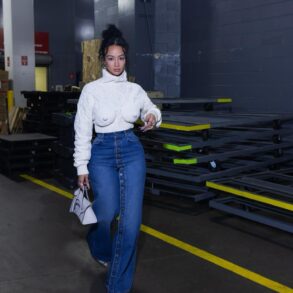What was the world’s first sneaker? Was it made in the 1830s, when the UK’s Liverpool Rubber Company fused canvas tops to rubber soles, creating beach footwear for the Victorian middle class? Or was it a few decades later, around 1870, with the invention of the tennis shoe? If you’re especially definitionally generous, perhaps it was back in the Athenian golden age, when Olympians began wearing sandals to protect their feet while running.
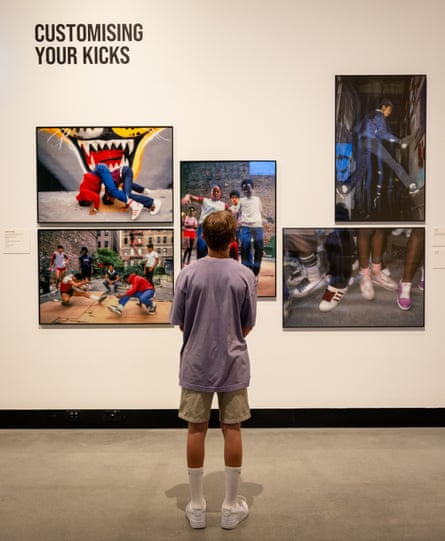
“Everyone has a different answer,” the curator of Sneakers Unboxed: Studio to Street, Ligaya Salazar, says of the new exhibition at the Gold Coast’s Home of the Arts (Hota) tracing the history, design, and cultural implications of the sports shoe. “It just depends on what story you want to tell.”
Salazar’s interpretation is particularly liberal, and there is certainly no shortage of stories as a result. Having toured internationally since its premiere at London’s Design Museum in 2021, Sneakers Unboxed encompasses over 400 objects and spills across an entire floor of Hota. It is operatic in scale and dizzying in ambition. There are leather sneakers that bulge like aliens; there are neon laces crisscrossing like a cat’s cradle. There is a pair of bootlegged runners with the Ikea logo stitched into the tongue.
From shoes worn by NBA legends to high-fashion collaborations with Comme des Garçons and Balenciaga and trainers straight out of a sci-fi novel, the show’s grand offering mirrors the expanse of the contemporary sneaker landscape. The industry currently generates $75bn a year and is estimated to hit almost $100bn by 2028, according to the research firm Statista.
“The sneaker,” says Salazar, “is the most ubiquitous designed object there is. Everyone owns at least one pair – and, as such, makes design decisions every time they buy them.”
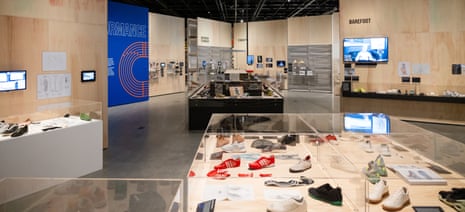



Sneakers Unboxed draws a line from the earliest commercial sports shoes to the hypebeast mania of the past decade, where queues for exclusive drops snake outside shopfronts for days and prized releases regularly resell for tenfold their retail price. The oldest display is a pair of Converse Chuck Taylors from the 1930s which look remarkably similar to today’s iteration – except they bear every bit of grime and degradation from the intervening century. Yellowed with age, they’re housed in a climate-controlled container.
The Chuck Taylors are intriguing, says Salazar, for their namesake: a semi-professional American basketballer better known for his shoes than his sporting career. At the time, Converse sneakers were used solely on the court, but Taylor was an avid promoter.
Taylor was the first athletic ambassador to lend his name to a sneaker, but the real boom, also driven in large part by basketballers, came later.
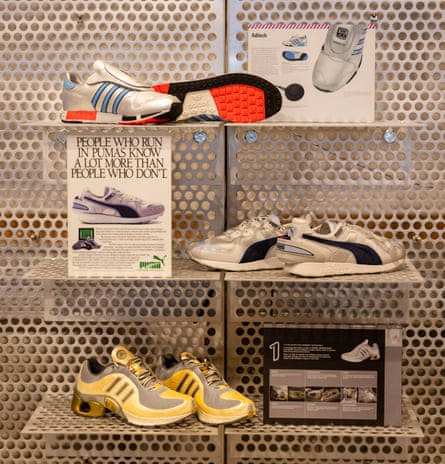



Salazar points to two items on display, released within a year of each other in the 70s: the Puma Clydes, a suede shoe titled after NBA star Walt “Clyde” Frazier, and Kareem Abdul-Jabbar’s Adidas Jabbars. Together, they exemplify the foundational elements of modern sneaker culture. “Novelty, rarity, cleanness: the way in which sneakers are now worn really comes from the 70s and 80s in New York,” says Salazar. Slowly but surely, something was shifting: formal leather shoes giving way to total sneaker saturation. “It’s very much young people from low socioeconomic backgrounds in diverse neighbourhoods that [championed] this.”
Subculture is a strong theme, and the exhibition has gathered contributions from each country it has visited since 2021. UK grime musicians Skepta and Jme are placed into a baroque fantasy in a pair of portraits by artist Reuben Dangoor. Clad in trainers and tracksuits, they are painted alongside noble steeds. From the Netherlands, there are old Nike Air Maxes, which were de rigueur among a 90s scene that revolved around a sub-genre of dancehall known as bubbling – not to be confused with South Africa’s bubbleheads, a niche fanbase devoted to sneakers with visible air bubbles in the sole.
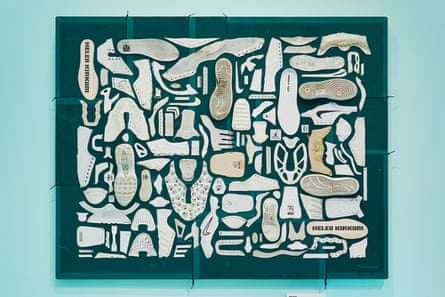



The exhibition, though, is as much about canny marketing efforts as grassroots uptake. Halfway through, a video display features a former Adidas marketing manager talking about hip-hop group Run-DMC, whose 1986 track My Adidas became an organic hit and scored them a brand deal.
after newsletter promotion
“Adidas, at that point, were still going to the Olympics and trying to get athletes to wear their shoes,” says Salazar. “But this marketing guy had gone to a [Run-DMC] gig.” When they played My Adidas, “everyone took their shoes off and was holding them up. And the marketing guy said, ‘We have to do a collab with these guys.’ It’s a pivotal moment.”
Sneaker history brims with such instances: brands capitalising on burgeoning trends to fuel ever-greater hype. Steps away from a black-and-white photo of Run-DMC lies an original pair of Air Jordans, Nike’s Michael Jordan collaboration that “flooded the market”, says Salazar. It has been called the sneaker of a generation and the ultimate cult shoe; one pair, worn by Jordan himself during the 1998 NBA finals, broke an auction record when it sold for US$2.2m earlier this year.
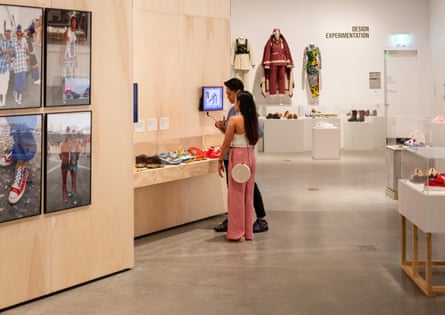



Those multimillion-dollar kicks are not on display, but Hota sourced an original pair – not worn by the man himself – from a Perth collector. Many other displays are also on loan from individual sneakerheads.
“Sportswear brands and fashion brands don’t really – or didn’t really – keep archives,” says Salazar. “[Collectors] quite often are the archivists of sneaker culture.” It was been piecemeal, sometimes arduous work to convince collectors to display their shoes – they “don’t like to part with their prized possessions – and rightly so”.
The other major challenge in curating the show was sheer volume. “When I was doing this, it was like, every week there were 12 new collaborations coming out,” Salazar says. “[We could have] shown thousands.”
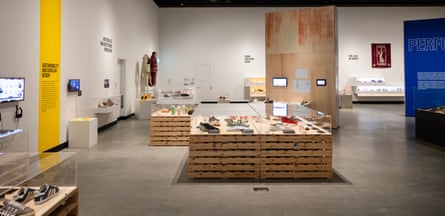



That level of mass production is cause for concern when sneaker manufacturing, as per a Ted Talk included in the exhibition, generates the same amount of carbon dioxide every year as 66m cars.
In response, Sneakers Unboxed ends on a selection of sustainability innovations – including shoes made from mushroom leather and recycled trash. “[But] the brands could do much more,” says Salazar. “There is a long way to go.”
This post was originally published on this site be sure to check out more of their content.



